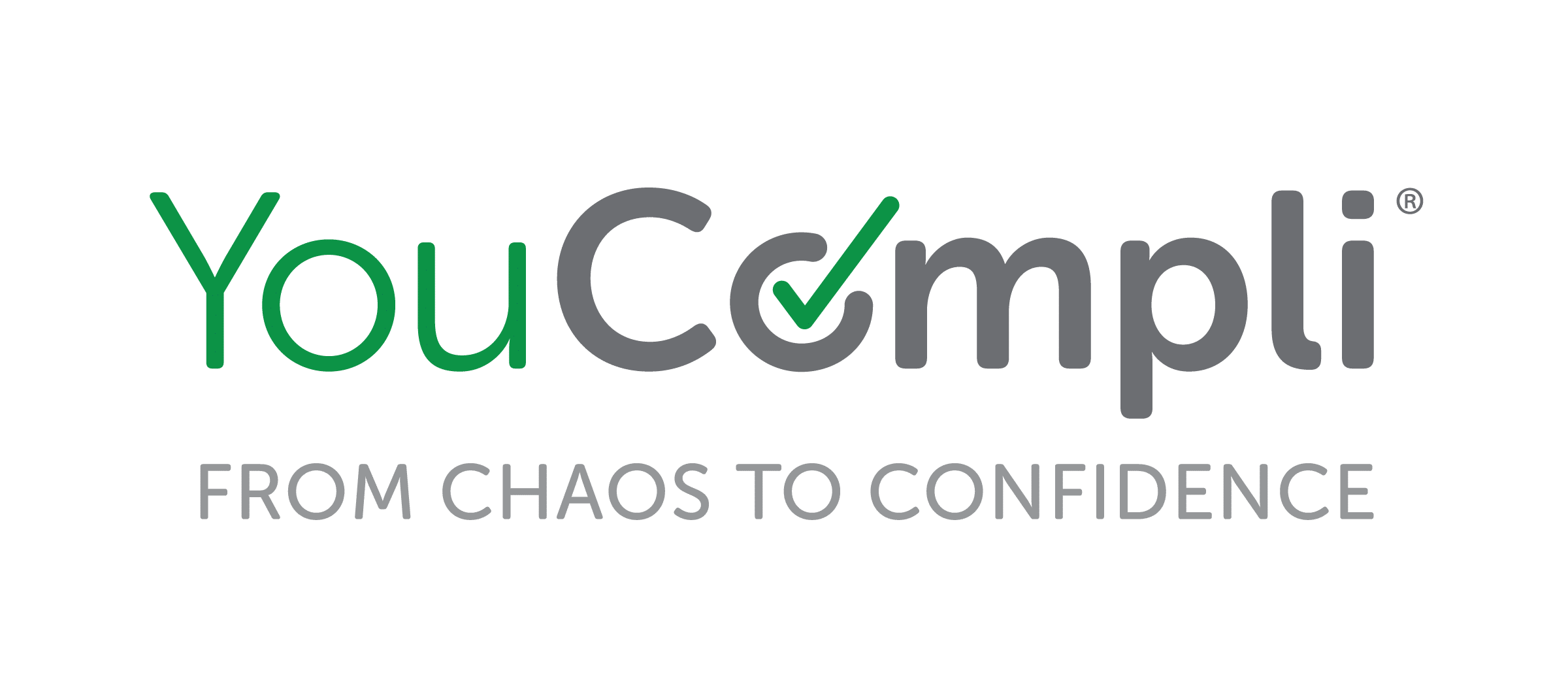
Imagine you’re at a circus called “The Circus of Wonders,” known for its unusual and exciting acts. The best-known performer is Hank Steele, a former lumberjack turned artist, who amazes audiences with daring chainsaw juggling.
On the night of his big debut at the circus, after months of practice perfecting his skill, Hank stepped onto the stage, chainsaws in hand. The audience held their breath as he tossed one, then two, and finally three chainsaws into the air, catching them with flawless precision. The crowd erupted into applause as Hank smiled, never once faltering. Hank’s chainsaw juggling became the centerpiece of every show, and his daring act was remembered as one of the greatest performances in the circus’ history. It proved that with skill and dedication, even the most dangerous ideas can lead to the most spectacular performances—if you’re brave enough to catch them.
If you think about it, healthcare compliance can be comparable to juggling chainsaws in the sense that both require a high level of skill, focus, and precision. Think about your organization as “the big top,” and all of the responsibilities you have as the compliance officer are your chainsaws!
In healthcare, the stakes are incredibly high, with strict regulations and standards that must be followed to ensure patient safety, privacy, and regulatory compliance. Healthcare compliance officers must juggle strategic decision-making, operational oversight, regulatory compliance, financial management, and team leadership—all while ensuring patient care remains the priority. Each role demands specialized knowledge and attention, and any misstep or oversight can lead to serious consequences – just like a slip while juggling chainsaws could result in significant harm. Both undertakings demand constant attention to avoid disaster, and the margin for error is minimal. However, just as a skilled juggler could manage chainsaws with practice and precision, effective healthcare compliance is achievable with proper systems, training, and vigilance.
Healthcare compliance encompasses a broad array of responsibilities aimed at ensuring that healthcare organizations operate within the bounds of laws, regulations, and ethical standards. Responsibilities can include regulatory requirements, policy management, risk management, ethics, privacy, claims auditing, information security, etc. These responsibilities can indeed be challenging and complicated for many reasons, especially when you have competing priorities. For example:
- Regulatory Requirements: Healthcare organizations must adhere to a myriad of local, state, and federal regulations. These include the Health Insurance Portability and Accountability Act (HIPAA), the Affordable Care Act (ACA), the False Claims Act, and other legislation that governs patient care, billing practices, and safety standards. Each of these regulations has specific requirements that must be followed, and failure to do so can result in potential legal penalties and reputational damage.
- Policy Management: Developing, implementing, and updating policies to ensure they comply with regulatory changes is a complex and ongoing process. Policies must cover a wide range of areas, from clinical practices to administrative procedures, and must be regularly reviewed to ensure they align with evolving regulations and industry standards.
- Risk Management: Healthcare organizations face numerous risks, from malpractice claims to cybersecurity threats. Properly managing these risks involves identifying potential vulnerabilities, developing strategies to mitigate them, and ensuring that proper insurance coverage is in place. The complexity of managing risks is compounded by the constantly changing nature of healthcare delivery and the increasing frequency of cyberattacks.
- Ethics: Healthcare compliance is not just about following the law but also about maintaining high ethical standards in patient care and business practices. Healthcare providers must balance the need to deliver quality care with the pressures of profitability, ensuring that ethical considerations such as patient autonomy, informed consent, and fairness are prioritized in decision-making.
- Privacy: The protection of patient data is a critical aspect of healthcare compliance. With the growing use of electronic health records (EHRs), the risk of data breaches has increased. Healthcare organizations must implement robust data privacy and security measures to safeguard sensitive patient information, in compliance with laws like HIPAA. Compliance officers must ensure that employees are trained on privacy issues, and that systems are regularly audited to prevent breaches.
- Claims Auditing: Healthcare organizations must verify that claims submitted for reimbursement are accurate and comply with regulatory requirements. This involves auditing billing practices to ensure that no fraudulent or incorrect claims are made. Auditors must navigate complex coding systems and payer requirements while maintaining strict adherence to legal standards.
- Information Security: The digitalization of healthcare data has heightened the importance of securing that information against cyber threats. Ensuring information security means implementing technical safeguards like encryption, access controls, and regular system updates. Moreover, security protocols must be consistently updated to address new types of threats, such as ransomware attacks.
Given these various and overlapping responsibilities, managing healthcare compliance becomes an intricate task that requires constant vigilance, ongoing education, and careful coordination among multiple departments. The dynamic nature of healthcare—marked by changing regulations, technological advancements, and evolving patient needs—further complicates the task. Compliance officers must stay ahead of these challenges to protect patient safety, ensure legal conformity, and safeguard the financial stability of healthcare organizations.
Managing competing priorities in healthcare compliance requires a strategic, objective approach. Here are some key strategies:
- Clear Goal Setting and Prioritization
- Identify Key Objectives: Establish clear, measurable goals for both short-term and long-term priorities. These should directly align with your facility’s mission, vision, and values.
- Focus on High-Impact Areas: Prioritize areas that directly impact patient care, regulatory compliance, and financial viability.
- Effective Time Management
- Delegation: Empower team members by delegating tasks based on their expertise. This prevents burnout and ensures that all tasks are handled by the appropriate personnel.
- Time Blocking: Set specific times for different tasks or meetings to minimize distractions and ensure that critical tasks get done without interference from competing demands.
- Buffer Time: Allow room for unplanned tasks and emergencies, as healthcare environments often involve unexpected events.
- Collaboration and Communication
- Cross-Functional Collaboration: Foster collaboration between departments (e.g., compliance, privacy, clinical teams, IT, revenue cycle) to address complex challenges that require input from multiple perspectives. Joint decision-making can help balance competing interests.
- Transparent Communication: Maintain open communication with all stakeholders to ensure alignment. Clear communication helps prevent misunderstandings about which priorities should take precedence.
- Regular Updates: Hold frequent meetings or check-ins to ensure progress is being made on various priorities and to make adjustments when needed.
- Data-Driven Decision Making
- Utilize Analytics: Use data and performance metrics to guide decision-making. For example, audit reports, patient feedback, accreditation survey results, and financials can provide insights into which areas require more immediate attention.
- Track Progress: Establish milestones for each priority to monitor and adjust as needed. Data will help clarify whether certain competing priorities should shift based on outcomes.
- Flexibility and Adaptability
- Adapt to Change: Healthcare is constantly evolving with new regulations, technologies, and patient needs. Stay flexible and adjust priorities as the situation demands—whether it’s responding to a health crisis, a policy change, or a technological update.
- Crisis Management: When emergencies arise, healthcare compliance officers must be able to pivot quickly. Have contingency plans in place for addressing urgent situations while continuing to meet long-term goals.
- Resource Allocation and Budget Management
- Optimal Resource Distribution: Balance competing priorities by allocating resources (time, money, staff) where they will have the greatest impact on patient care and organizational efficiency.
- Monitor Budget Constraints: Make financial decisions based on both immediate needs and long-term goals. Ensure that high-priority areas, like patient care or compliance with regulations, are funded appropriately, even when financial resources are limited.
- Continuous Improvement and Feedback Loops
- Learn from Experience: After managing competing priorities, take time to review the outcomes and identify areas for improvement. Feedback from staff and patients is invaluable for refining future decision-making processes.
- Implement Operational Efficiencies: Consider implementing continuous improvement methodologies to streamline processes and reduce inefficiencies. This can help free up resources to focus on higher-priority tasks.
By using these strategies, healthcare compliance officers can better navigate the complexities of their numerous roles and responsibilities. The key is balancing the immediate demands with long-term goals, all while ensuring that patient care and regulatory compliance remain top priority.
So, back to chainsaw juggling . . . Just like Hank Steele had to master juggling chainsaws with precision and care, healthcare compliance officers must balance multiple competing priorities with skill, adaptability, and focus. Managing priorities, like juggling chainsaws, requires not just courage, but a deep respect for the risks and rewards involved in each decision.
Susan is a healthcare compliance leader with over four decades working in a variety of administrative and managerial capacities, including strategic planning, regulatory oversight, revenue cycle risk mitigation, denial and appeal management, privacy and information security, healthcare advocacy, clinical department leadership, provider practice administration, risk management, and quality outcomes. Currently, Susan provides compliance and privacy consulting services to a variety of healthcare organizations, including program implementation, policy and procedure development, compliance and privacy training, and regulatory oversight administration.
Susan is a Certified Internal Auditor (CIA), Certified Healthcare Compliance (CHC), Certified Professional Coder (CPC) and holds a Certification in Risk Management (CRMA).

Download our Latest White Paper

Qualified compliance professionals do the heavy lifting for you, simplifying regulatory change management
Our in-house team works tirelessly to monitor U.S. regulators, carefully read the regulations in their entirety, and translate the information into simple regulatory intelligence you can use. We deliver model procedures and expert tools that can be used to fulfill your business requirements. Everything is validated by a third-party law firm.

